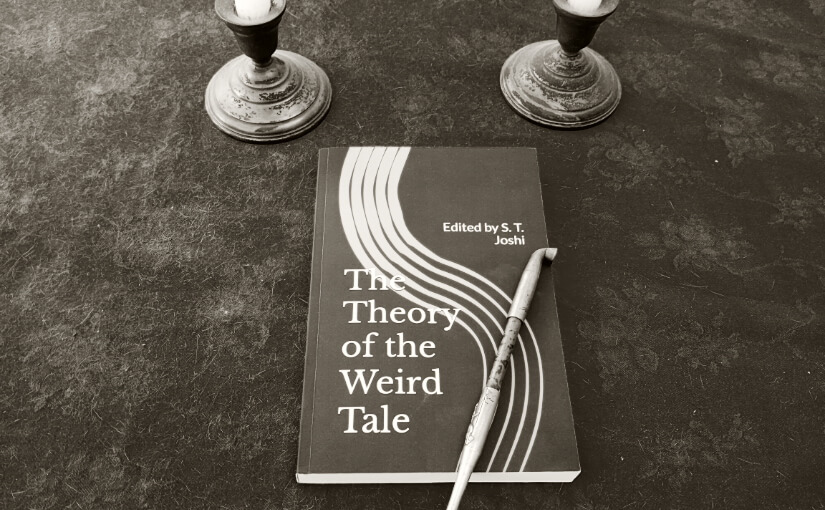What some well known authors have said that provides some background of the Weird Tale sub-genre.
The Theory of the Weird Tale (257 pages ; ISBN 979-8332097829) is edited by the renowned scholar S.T. Joshi and released on July 2, 2024 through Joshi’s own imprint Sarnath Press. It is described as follows:
Over the past two and a half centuries, leading authors of weird, horror, and supernatural fiction have expressed their opinion on the nature and content of the genre to which they are contributing. This theorizing began as early as Horace Walpole’s preface to The Castle of Otranto (1764). Other Gothic novelists—including Sir Walter Scott and Mary Shelley—wrote provocatively about the sources of their weird tales. In the 19th century, Edgar Allan Poe validated his psychological approach to horror, while Henry James, Vernon Lee, and Arthur Machen outlined their methodologies in creating fear. In the 20th century, a wealth of authors—notably Algernon Blackwood, M. R. James, and preeminently, H. P. Lovecraft—wrote penetrating essays on the aesthetic purposes of weird fiction. Such theorizing continued with Oliver Onions, Clark Ashton Smith, L. P. Hartley, and others. S. T. Joshi, a leading authority on weird fiction, has brought these and other pieces together in an illuminating presentation of what horror writers themselves believe is the essence of their chosen genre.
This is a mostly accurate description of what you are getting with The Theory of the Weird Tale. Each chapter begins with a short introduction to the author and a brief statement from S.T. Joshi on their relevance to the evolution of the weird tale. Each entry is an essay or, an introduction or forward the author wrote for a particular work. Joshi of course provides his own introduction which finely sets your expectations of what you can get out of The Theory of the Weird Tale.
The illuminating presentation mentioned in the description is very much there, in that while the term ‘weird tale’ wasn’t always in existence when the article was written, the authors point out that the common reference (very often ‘ghost story’) would have especially effective qualities that in turn would eventually define what we know as the weird tale. In short, you are following the trail of ‘theory’ starting with gothic works like The Castle of Otranto. What we know of as the weird tale seemingly branched off from the ‘ghost story.’
Why read it?
Joshi is doing us a great favor by editing together introductions to renowned works and especially, those of historically respected literary figures, that provide connective tissue in the study of literature. It would make for an interesting credit course in any English literature department.
What well respected writers say about the works of other writers (as well as their own) can be illuminating, not only from the viewpoint of one creator of another, but how the work may be viewed within the snapshot of time.
Some essays in The Theory of the Weird Tale may surprise you. I was not familiar with voluminous literary criticism of Sir Walter Scott (author of Ivanhoe and Rob Roy) before reading this. Joshi emphasizes the significance of Scott’s “On the Significance of the Supernatural in Fictitious Composition.”
If you are reading this specifically because of your interest in H.P. Lovecraft, then you’ll be happy to know that Joshi has included some selections from letters as well as “Notes on Writing Weird Fiction.” The latter is mostly a general overview of writing drafts than specifically about the topic, but he does give a short list of “four distinct types of weird story” as well.
Clark Ashton Smith’s “Atmosphere in Weird Fiction” and Henry S. Whitehead’s “The Occult Story” will also be of specific interest as fellow contributors to Weird Tales Magazine. The last selection in this book dates from 1955.
You can find The Theory of the Weird Tale on Amazon but, it is also possible to order it directly from S.T. Joshi.
